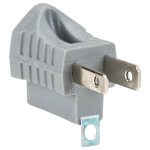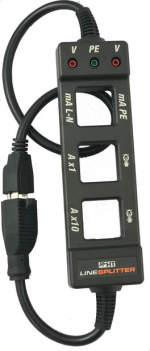Brand new dishwasher on a kitchen remodel trips the GFCI, its a 12/3 MWBC, my coworker (electrician) swapped gfci's and used a extension cord to go to another GFCI on another circuit.
Trips all of them.
Dishwasher came with factory wired cord.
Next appliance warranty service comes out says faulty wiring, not sure what he did, homeowner suspected nothing.
Contractor requested a GFCI breaker but I forgot it was a MWBC, that would be an expensive breaker.
Today I visited the site for the second opinion and I plugged in one of those 2-3 prong adapters and dishwasher ran fine.

I measured 40v from the grounding tab on the plug to the metal outlet box, with a good multi meter true RMS.
I used my good old wiggy for the same test and it did not light up or vibrate, so it must be a really low current.
Ran a known good ground wire to the panel to test still 40 Volts on dishwasher frame.
I did not try to ammeter as I dont think my meter would be accurate in miliamp range.
I realize I need one of those adapters that lets you read the miliamps on the cord, and go meet the appliance guy there.
To you electronics / engineers on here I realize there are surge protectors you put on your circuit boards with some kinda blue caps connected to our EGC, it there any situation it would be 'normal' for there to be 40 volts on an open ECG like that?
Thanks in advance
Trips all of them.
Dishwasher came with factory wired cord.
Next appliance warranty service comes out says faulty wiring, not sure what he did, homeowner suspected nothing.
Contractor requested a GFCI breaker but I forgot it was a MWBC, that would be an expensive breaker.
Today I visited the site for the second opinion and I plugged in one of those 2-3 prong adapters and dishwasher ran fine.

I measured 40v from the grounding tab on the plug to the metal outlet box, with a good multi meter true RMS.
I used my good old wiggy for the same test and it did not light up or vibrate, so it must be a really low current.
Ran a known good ground wire to the panel to test still 40 Volts on dishwasher frame.
I did not try to ammeter as I dont think my meter would be accurate in miliamp range.
I realize I need one of those adapters that lets you read the miliamps on the cord, and go meet the appliance guy there.
To you electronics / engineers on here I realize there are surge protectors you put on your circuit boards with some kinda blue caps connected to our EGC, it there any situation it would be 'normal' for there to be 40 volts on an open ECG like that?
Thanks in advance


